By now, many of you would have known that the BMW 330e iPerformance plug-in hybrid has officially been launched last Friday with a competitive price tag of RM248,800 on-the-road without insurance. Many have been wondering why its rival, the upcoming Mercedes-Benz C 350 e, has been given indicative pricing that is some RM50k higher – despite also being classified as an Energy Efficient Vehicle (EEV) – at RM299,000.
Mercedes-Benz Malaysia (MBM) vice president for sales and marketing Mark Raine has been on the record to set things straight – speaking to paultan.org, he said that the higher pricing of the C 350 e was meant to complement the existing lineup.
“At the moment we have got the C 180 at RM228k, the C 200 at RM248k for the Avantgarde and RM252k for the Exclusive, the C 250 AMG Line at RM287k and the C 300 at RM308k,” Raine said. “So the C 350 e is going to come at RM299k and we’re going to take the C 300 out of the portfolio.
“We’ve carefully thought, should we leave the C 250 in our portfolio? Yes, we decided, because there are obvious reasons why customers would decide to go for the C 250 or the C 350 e.”
Raine also said that while the C 350 e will be more expensive than the 330e, the company did not want to compete with the BMW price-wise, as it has a different strategy of promoting value for money. “In comparison to our direct competitor, the C 350 e is a bit more expensive,” he said.
“That is right, but what we didn’t want to do with this vehicle was to bring a price leader to the market. We didn’t want to bring the vehicle with the most attractive price tag. Our mindset for this vehicle is that we want sell value. This vehicle has so many USPs and is so benchmarked in this segment,” Raine added, referring to the higher amount of equipment that the C 350 e will carry.
Those include most of the kit seen on the C 300, including a full AMG exterior and interior styling package, 19-inch AMG multispoke alloy wheels, a panoramic sliding sunroof, the 590 W, 13-speaker Burmester surround sound system and Thermotronic three-zone automatic climate control. Additional features include Airmatic air suspension, a 360-degree camera system and a climate pre-conditioning system that will allow you to programme the climate control to turn on at a preset time.
Propulsion will come from the ubiquitous 2.0 litre turbocharged four-cylinder engine in a similar tune to the C 250, making 211 hp and 350 Nm of torque. Providing additional power is an 80 hp/340 Nm electric motor sandwiched between the engine and the 7G-Tronic Plus seven-speed automatic transmission, resulting in a total system output of 279 hp and 600 Nm.
As a result, the C 350 e will go from 0-100 km/h in just 5.9 seconds, while combined fuel consumption is rated at 2.1 litres per 100 km on the European NEDC cycle. The car has an all-electric range of 31 km, with a maximum speed of 130 km/h in this mode. Carbon dioxide emissions sit at just 48 grammes per kilometre.
The electric motor is juiced by a 6.2 kWh high-voltage water-cooled lithium-ion battery fitted at the rear of the car, resulting in a stepped boot floor and reduced luggage space from 475 litres to 335 litres. Charging time is around 1 hour 45 minutes through the wallbox or around two hours using a standard 230 V domestic socket. The charging port is located under the right tail light.
Looking to sell your car? Sell it with Carro.






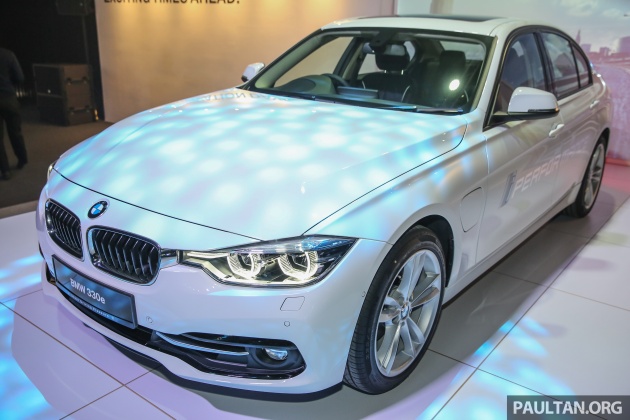


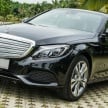
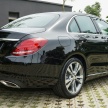
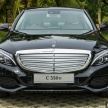
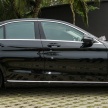
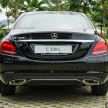

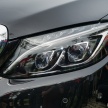
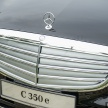
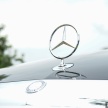
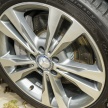
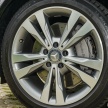
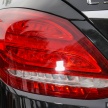
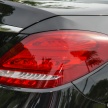
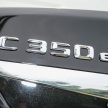
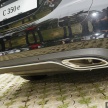
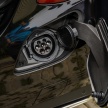
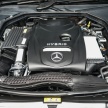

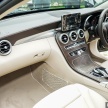
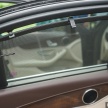
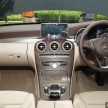
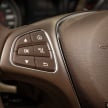

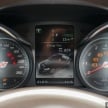


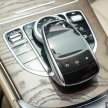
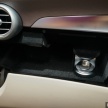


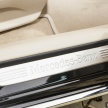


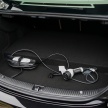
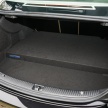



















































AI-generated Summary ✨
Comments show strong dissatisfaction with the Mercedes-Benz C350e's high RM299k pricing, with many perceiving it as overpriced compared to competitors like BMW's 330e and E300 models. Several commenters criticize MBM for not passing on tax incentives and subsidies, accusing the company of exploiting consumers for higher profits. There is a consensus that the pricing appears greedy, especially given the features and hybrid battery costs, with many suggesting that alternatives like secondhand BMWs or Proton offer better value. Some express disappointment that the car may not come with full specifications or incentives, and critics view Mercedes' pricing strategy as a move to maximize profits rather than benefit consumers. Overall, the sentiment is negative, perceiving the vehicle as a bad deal in the current market.